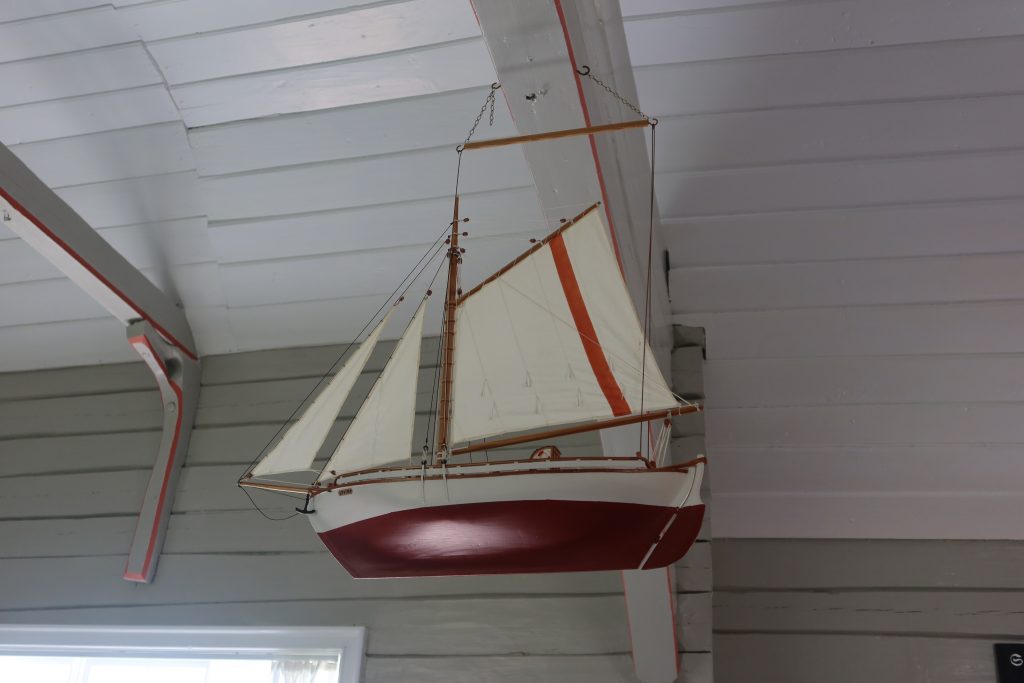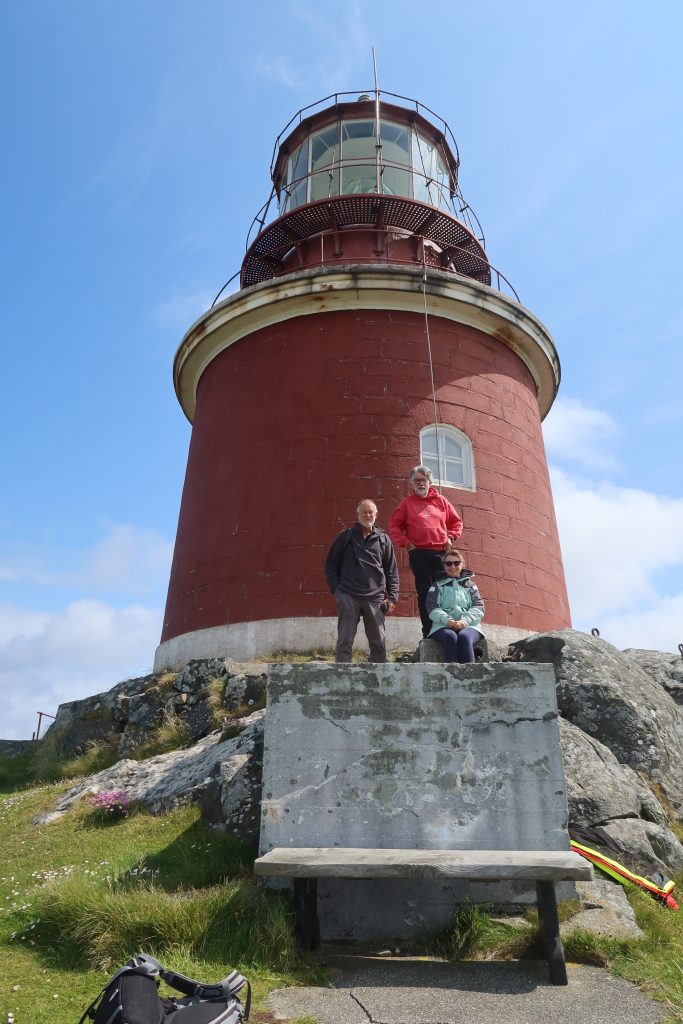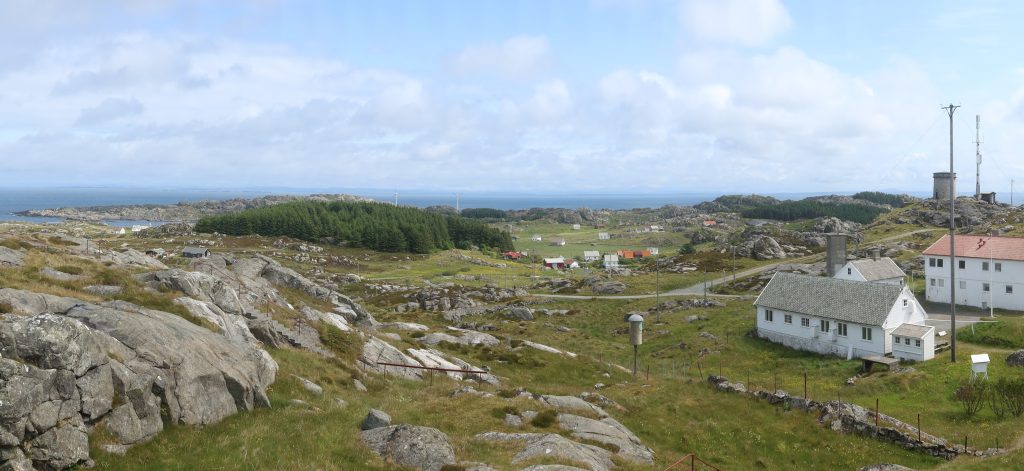Viking, North Utsire, South Utsire – Northwesterly 2 to 4, backing southerly 4 to 6. Slight or moderate. Showers. Good. This is the shipping forecast issued by the Met Office for today. Such familiar, poetic and generally sonorous words, yet ones which are imbued with history and meaning and ones which, over the years have saved so many lives through their detailed analysis of weather and weather patterns.
So, what are the sea areas North and South Utsire? Well they relate to an island called Utsira (not a typo!) about 11 miles off the Norwegian coast. The island happens to sit in the right place to split the two sea areas off the Norwegian coast. Everything north of the middle of Utsira is North Utsire and similarly for the southern area. Given that there is a ferry across to Utsira from Haugesund (and not least that the ferry is free!), it seemed remiss not to go and visit. So, we took the 11am ferry across, arriving just after midday.

We showed our priorities instantly as the first thing was that we walked into the restaurant near the north harbour (where the ferry docks) and checked about lunch. The very chatty owner explained that he could do lunch for us but not until 1.30pm as he had to check with the farmer that he was going to deliver the Angus burgers that morning – fresher burgers with fewer food miles would probably have been impossible.

So, while we waited for the burgers to be delivered we headed off for a walk. We first headed to the church. This dates (mostly) from 1785, though the tower and the sacristy were added in 1954. It was a beautiful church and, as with many Scandinavian churches, it has a votive ship. This one though was added in 1998 and is a model of a pilot boat, something that is very symbolic for Utsira. Though apparently not a model of a specific pilot boat, it is a style that looks very familiar – almost a Colin Archer-style look to the hull. The red stripe on the sail was to mark it out as a pilot boat and differentiate it from the other boats around. The boat is named Utsia.


The Old Norse form of the island’s name was just Síri (in the nominative case) or Síra (in the genitive case). The first element, út which means “out” or “offshore”, was added during the 16th century. However, the locals still call the island Sira and leave off the prefix. Local residents are known as sirabu. From 1875 to 1924 it was spelled “Utsire” and this is the spelling used by the shipping forecast. However, since 1925 the Norwegians have used the spelling “Utsira”. Despite that, when the forecast areas were introduced to the shipping forecast in 1984, they used the “Utsire” spelling!
The island is just 2 square miles, so easy to walk around and with just 200 residents could hardly be described as populous, but is very beautiful. From the church we walked up to the lighthouse. This has the unexpected accolade of being the highest lighthouse in Norway. Given the topography of Norway a lighthouse which stands at an elevation of 78 metres, would not usually be considered the highest, but it is! The lighthouse was first lit in 1844 and automated in 1992. It does, however, remain a very important meteorological recording site. The weather station has been recording constantly since 1867, giving one of the longest constant meteorological records. The highest temperature ever recorded was 29.3 degrees C – perhaps not a good sign for what we can expect in the coming weeks. The most rain ever recorded in a single day is 3.2 inches!

Another of the unique features of Utsira is that it had Norway’s first every female Mayor. In an election in 1924, it was apparently intended that the twelve men on the interim council would be elected, but the official list of candidates listed eleven women and one man. This fact didn’t become evident until the day of the election and by then it was too late, so despite a legal challenge the twelve were elected and Aasa Helgesen, the local midwife, was elected the first Mayor of Utsira and the first female mayor in Norway. She remained Mayor until 1928 and was very successful in the role – that should definitely tell us something.

